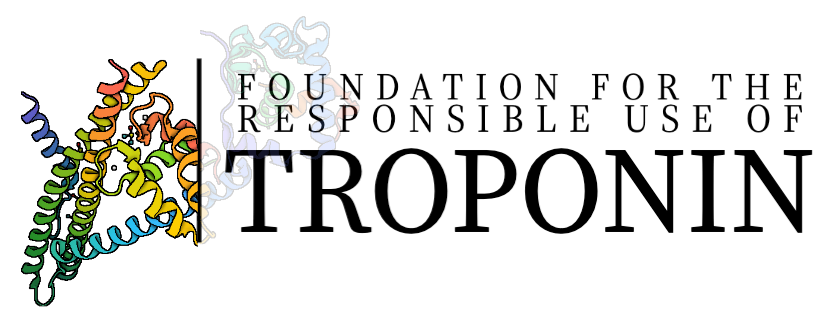TnC has only two isoforms in the human genome: cardiac troponin C (TnC, gene name TNNC1) and fast-twitch skeletal TnC (fsTnC, gene name TNNC2) (Figure 2). TnT has a molecular weight of 18 kDa and is composed of 210 amino acids that are not al-ternatively spliced [34]. The isoforms of TnC expressed in cardiac and slow-twitch skeletal muscle are identical, while the isoform of TnC expressed in fast-twitch skeletal muscle is unique [35,36]. TnC and fsTnC have similar C-terminal domains which each bind two calcium ions, while TnC has only one calcium-binding site in its N-terminal domain which is necessary for calcium-induced cardiac muscle contraction [37]. Because the isoform of TnC expressed in cardiac muscle is identical to TnC expressed in slow-twitch skeletal muscle, measurement of TnC in a clinical setting would not be able to differentiate the etiology of muscle disease. Hence, commercial assays for clinical use focus on either TnI or TnT.
TnI has three separate protein-coding genes: TNNI1, which encodes slow-twitch skeletal TnI (ssTnI); TNNI2, which encodes fast-twitch skeletal TnI (fsTnI); and TNNI3, which encodes cardiac TnI (Tn). TnI is the largest isoform, has a unique N-terminal se-quence with PKA-regulated phosphorylation sites (S23 and S24) not seen in other TnI isoforms, and is not alternatively spliced [34]. The fetal heart expresses ssTnI, but by nine months of life only TnI is detectable at the transcript and protein level [38]. Though it was previously hypothesized that heart failure would result in re-expression of fetal ssTnI, immunoblotting and northern blotting refuted this hypothesis [38]. However, phos-phorylation studies using antibodies against phospho-TnI reveal that in heart failure, the relative fraction of phosphorylated TnI decreases, suggesting a potential adaptive or maladaptive response to smaller calcium transients seen in the failing heart [39].
TnT has the most complex variety of isoforms relative to the other troponins. TnT has three separate protein-coding genes: TNNT1, which encodes slow-twitch skeletal TnT (ssTnT); TNNT2, which encodes cardiac TnT (TnT); and TNNT3, which encodes fast-twitch skeletal TnT (fsTnT) [34]. TnT encodes 17 exons, of which exons 4, 5, and 13 can undergo alternative splicing [40]. Gene products resulting from alternative splicing of exons 4 and 5 yield four cardiac-specific TnT proteins, with each sub-isoform having a unique calcium sensitivity and ability to inhibit myosin ATPase [41]. Though the biophysical basis of each isoform is beyond the scope of this review, several observations have particular clinical relevance: First, the N-terminal tail of TnT can be cleaved by μ-calpain in the setting of ischemia-reperfusion, which preserves stroke volume through an interaction with tro-pomyosin [42]. Second, an exon-4-skipped TnT isoform is overexpressed in the failing human heart, in familial hypertrophic cardiomyopathy, and in a diabetic rat heart [43]. Third, in the setting of skeletal muscle disorders, cardiac-specific TnT is often re-expressed in diseased skeletal muscle and detectable at the proteomic and transcriptomic levels [44,45]. This may confound the clinical interpretation of positive TnT tests among this population.
Gokhan I, Dong W, Grubman D, Mezue K, Yang D, Wang Y, Gandhi PU, Kwan JM, Hu J-R. Clinical Biochemistry of Serum Troponin. Diagnostics. 2024; 14(4):378. https://doi.org/10.3390/diagnostics14040378

